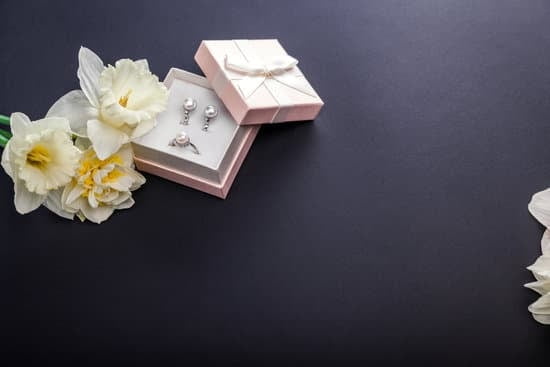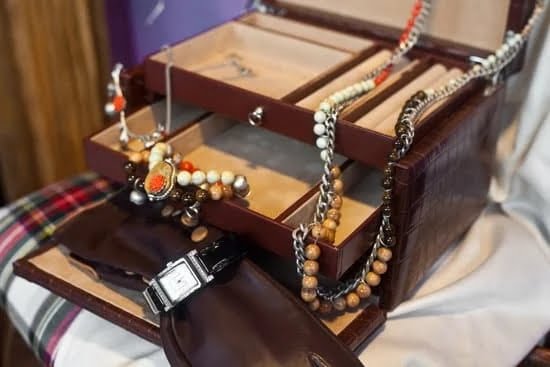Diamond jewelry holds both sentimental and monetary value, making it a cherished possession for many. From engagement rings to heirloom pieces, these precious gems require protection against unforeseen events. Insuring diamond jewelry provides peace of mind and financial security in case of loss, theft, damage, or accidental disappearance. Understanding the importance of insurance coverage is essential for all diamond jewelry owners.
One of the key aspects of insuring diamond jewelry is recognizing its value. Diamonds are not only rare but also possess a high price tag due to their scarcity and desirability. The value factor plays a significant role in determining the appropriate insurance coverage needed. Exploring the rarity and price factors helps evaluate the significance of protecting diamond jewelry through insurance.
As with any valuable possession, there are risks and threats associated with owning diamond jewelry. Loss, theft, damage, and accidental disappearance can occur at any time, leaving owners heartbroken and financially burdened. Having insurance coverage safeguards against these risks, allowing individuals to replace or repair their diamond jewelry without suffering substantial financial losses.
Insuring diamond jewelry involves various types of coverage options such as homeowner’s insurance, renter’s insurance, or standalone jewelry insurance policies. Each option has its own advantages and considerations that need to be evaluated based on individual circumstances and preferences. Understanding the different types of insurance coverage available will help determine the most suitable option for insuring your valuable diamond jewelry.
In this article series, we will delve into each aspect of insuring diamond jewelry in detail – from understanding the value factors to exploring various insurance coverage options. We will also provide valuable insights on how to find the right insurance provider and policy as well as tips for enhancing security measures for insured diamond jewelry. Additionally, we will guide you through filing an insurance claim and address frequently asked questions about insuring your precious diamond assets.
By the end of this article series, you will have a comprehensive understanding of why insuring diamond jewelry is crucial, how to choose the right insurance coverage, and the steps involved in protecting your prized possessions. Whether you are a proud owner of a sparkling engagement ring or a collector of exquisite diamond pieces, insuring your diamond jewelry ensures that you can enjoy them for years to come with peace of mind and financial protection.
Understanding the Value of Diamond Jewelry
Diamonds have long been recognized as one of the most precious gemstones in the world, prized for their beauty, durability, and rarity. Understanding the value of diamond jewelry is essential when it comes to insuring these valuable assets. This section will delve into the factors that contribute to the value of diamond jewelry, including rarity and price.
Rarity
One of the primary factors that determine the value of diamond jewelry is its rarity. Diamonds are formed deep within the Earth’s mantle under extreme conditions of pressure and temperature, making them exceptionally rare. The process takes millions or even billions of years, with only a small percentage of diamonds being able to reach the Earth’s surface through volcanic eruptions.
The rarity of diamonds is also influenced by their size and quality. Larger diamonds are significantly rarer than smaller ones, which means they command higher prices in the market. Additionally, diamonds with exceptional clarity, color, cut, and carat weight are considered more valuable due to their scarcity.
Price Factors
In addition to rarity, several other factors influence the price of diamond jewelry. These include:
- Cut: The cut refers to how well a diamond has been shaped and faceted by skilled craftsmen. A well-cut diamond reflects light most effectively and displays superior brilliance, fire, and sparkle.
- Clarity: The clarity grade measures a diamond’s internal flaws or inclusions and external blemishes. The fewer imperfections a diamond has, the higher its clarity grade will be.
- Color: White diamonds are graded on a scale from D (colorless) to Z (light yellow or brown tint). Diamonds that are closer to colorless are rarer and thus more valuable.
- Carat Weight: Carat weight refers to a diamond’s size, with one carat being equal to 200 milligrams. The higher the carat weight, the higher the price.
By understanding these value factors, individuals can make informed decisions when it comes to insuring their diamond jewelry. Insuring such valuable assets provides financial protection in the event of loss, theft, damage, or accidental disappearance. Moreover, insurance offers peace of mind and ensures that one’s precious diamond jewelry is protected for generations to come.
Risks and Threats to Diamond Jewelry
Diamond jewelry holds immense value not only monetarily but also sentimentally. Whether it’s an engagement ring passed down through generations or a pair of diamond earrings that were purchased for a special occasion, protecting these precious items is crucial. As with any valuable possession, there are risks and threats that diamond jewelry owners should be aware of. This section will explore the potential dangers that can befall diamond jewelry, including loss, theft, damage, and accidental disappearance.
Loss
One of the primary concerns for diamond jewelry owners is the possibility of losing their prized possessions. Misplacing a valuable piece of jewelry can happen in various situations – during travel, while moving homes, or simply in everyday life. Losing a diamond ring or necklace not only leads to emotional distress but also significant financial loss. Even a small stone can carry substantial value.
Theft
Theft is another major threat faced by diamond jewelry owners. Criminals recognize the high value associated with diamonds and may target individuals wearing or possessing such items. Burglaries and robberies can result in devastating losses if proper precautions are not taken.
Damage
Diamonds may be one of the hardest substances on Earth, but they are certainly not invincible. Despite their durability, they can still sustain damage from accidents or mishaps. A simple drop could chip the stone or cause structural damage to the setting. Additionally, other gemstones surrounding the diamonds could also be at risk of being damaged.
Accidental Disappearance
Accidents happen unexpectedly and can result in the unintentional disappearance of diamond jewelry. For example, jewelry might slip off while swimming in a lake or ocean or unknowingly fall out from a pocket without notice.
It is important for diamond jewelry owners to remain vigilant and aware of these risks. By understanding the potential threats, individuals can take proactive measures to prevent or mitigate the likelihood of loss, theft, damage, or accidental disappearance. The next section will delve into the various insurance coverage options available to provide financial protection against these risks.
Types of Insurance Coverage for Diamond Jewelry
When it comes to insuring diamond jewelry, there are several types of insurance coverage options available to consider. These include homeowner’s insurance, renter’s insurance, and standalone jewelry insurance. Each type of coverage has its own advantages and considerations that individuals should carefully evaluate before making a decision.
- Homeowner’s Insurance: Many homeowners often assume that their diamond jewelry is automatically covered under their homeowner’s insurance policy. While this may be true to some extent, it is important to note that most homeowner’s insurance policies have limits on the coverage for high-value items such as diamond jewelry.
Typically, the coverage limit ranges from $1,000 to $2,500 for theft or loss of jewelry, which may not adequately cover the full value of expensive diamond pieces. Additionally, homeowner’s insurance usually does not cover accidental damage or mysterious disappearance of jewelry. - Renter’s Insurance: Similarly to homeowner’s insurance, renter’s insurance also provides some coverage for personal belongings including diamond jewelry. However, like homeowner’s insurance policies, renter’s insurance typically has coverage limits that may not fully protect the value of high-end diamond pieces in case of loss or theft. It is important for renters to carefully review their policy and consider additional coverage if needed.
- Standalone Jewelry Insurance: Standalone jewelry insurance is a specialized type of insurance specifically designed to cover high-value items such as diamond jewelry. This type of coverage offers more comprehensive protection and higher coverage limits compared to standard home or renter’s policies. Standalone policies often cover a wide range of risks including loss, theft, damage, and accidental disappearance with replacement cost reimbursement.
Before deciding on the right type of coverage for your diamond jewelry, it is essential to carefully assess factors such as the value and rarity of your pieces, as well as your specific needs and concerns regarding potential threats and risks. Additionally, considering factors such as appraisal values, deductible amounts, coverage limits, and premiums is crucial in making an informed decision about insuring your diamond jewelry.
Comparing different insurance providers and policies can help individuals find the best coverage option that suits their specific requirements.
Overall, insuring diamond jewelry offers peace of mind and financial protection in case of unexpected events. Whether it is through homeowner’s insurance, renter’s insurance, or standalone jewelry insurance, selecting the right type of coverage ensures that your valuable diamond pieces are adequately protected and that you can receive proper compensation in the event of loss, theft, or damage.
| Type of Insurance | Advantages | Considerations |
|---|---|---|
| Homeowner’s Insurance | Some coverage already provided; may have lower premiums if bundled with other policies | Limits on coverage for high-value items; may not cover accidental damage or mysterious disappearance |
| Renter’s Insurance | Provides coverage for personal belongings including jewelry; may offer liability protection as well | Limits on coverage; additional coverage may be needed for high-value items |
| Standalone Jewelry Insurance | Comprehensive protection with higher coverage limits; covers various risks including theft, loss, damage, and accidental disappearance | Different policies and premiums to compare; appraisal values required for determining coverage amounts. |
Factors to Consider when Insuring Diamond Jewelry
When insuring diamond jewelry, there are several factors that need to be considered to ensure adequate coverage and protection. These factors include the appraisal process, coverage limits, deductibles, and premiums.
Appraisal
One of the most important factors to consider when insuring diamond jewelry is obtaining an accurate appraisal. An appraisal determines the value of the jewelry and is typically conducted by a professional gemologist or a certified appraiser. This valuation will determine how much coverage you will need for your diamond jewelry and will serve as evidence of its worth in case of a claim.
It is recommended to get your diamond jewelry appraised every few years to account for any changes in market value. Additionally, make sure that the appraiser provides a detailed description of the jewelry, including information about the quality and characteristics of the diamonds. This documentation will assist in assessing replacement or repair costs accurately.
Coverage Limits
Coverage limits refer to the maximum amount that an insurance policy will pay out in case of damage, loss, or theft of diamond jewelry. It is essential to review your policy carefully to understand what these limits are and ensure they align with the value of your jewelry. If your coverage limit is insufficient, you may not be fully compensated for your loss.
In some cases, policyholders can schedule additional coverage specifically for high-value items like diamond jewelry. This can be done by listing each piece individually with its corresponding value on a separate endorsement or floater attached to your policy. By doing so, you can ensure that your coverage adequately reflects the actual value of your precious pieces.
Deductibles and Premiums
Deductibles are an out-of-pocket expense that policyholders must pay before their insurance kicks in. When it comes to insuring diamond jewelry, higher deductibles often result in lower premiums but also mean more financial responsibility in case of a claim. On the other hand, lower deductibles will lead to higher premiums but require less upfront expenditure if an incident occurs.
It is crucial to strike a balance between deductibles and premiums that aligns with your financial situation and risk tolerance. Consider factors such as the value of your diamond jewelry, the likelihood of filing a claim, and your ability to pay the deductible when choosing a policy. Consulting with insurance professionals can provide valuable insights and help you make an informed decision.
Taking into account these factors when insuring diamond jewelry will ensure that you have comprehensive coverage that adequately protects your precious pieces. With accurate appraisals, appropriate coverage limits, and carefully chosen deductibles and premiums, you can have peace of mind knowing that your diamond jewelry is protected against various risks and threats.
How to Insure Diamond Jewelry
Insuring your diamond jewelry is an important step in protecting your valuable investment. To ensure you find the right insurance provider and policy for your needs, follow this step-by-step guide:
- Research Insurance Providers: Start by researching insurance providers that specialize in jewelry coverage. Look for companies that have experience with insuring diamond jewelry specifically. Read reviews, check their reputation and customer service ratings, and compare pricing and coverage options.
- Evaluate Coverage Options: Understand the types of insurance coverage available for diamond jewelry. Homeowner’s insurance and renter’s insurance often provide some coverage, but it may be limited and may not cover specific risks like accidental damage or disappearance outside of home. Standalone jewelry insurance policies offer more comprehensive coverage tailored to the unique risks associated with diamond jewelry.
- Determine Coverage Needs: Consider the value of your diamond jewelry to determine the appropriate coverage limits you need. Take into account factors such as the rarity, quality, and price of your diamonds when assessing their value. It’s recommended to get a professional appraisal to accurately determine the value of your pieces.
- Compare Deductibles and Premiums: Take time to compare deductibles and premiums offered by different insurance providers. Deductibles are the amount you need to pay out-of-pocket before your insurance kicks in, while premiums are the regular payments you make for coverage. Finding a balance between affordable premiums and reasonable deductibles is essential.
- Seek Recommendations: Ask friends, family, or jewelers for recommendations on reputable insurance providers they have used in the past. Personal recommendations can help you find reliable companies that prioritize customer satisfaction.
- Request Quotes: Contact multiple insurers to get quotes based on the coverage limits and deductibles you determined during your evaluation process. Provide them with accurate information about your jewelry to receive accurate quotes.
- Review Policy Details: Once you receive quotes from different insurers, carefully review each policy’s details side by side. Pay attention to coverage limits, deductibles, exclusions, and any additional options offered. Choose a policy that provides the right level of coverage for your needs.
- Understand Policy Terms: It’s crucial to understand the terms and conditions of your chosen policy before making the final decision. Be aware of any special requirements or restrictions that may apply, such as mandatory appraisals or security system installations.
- Purchase and Document: After selecting a policy, purchase the insurance and ensure you have proper documentation in place. Keep copies of your insurance policy along with any appraisals, receipts, or certifications related to your diamond jewelry in a safe place.
- Review and Update Regularly: As the value of your diamond jewelry may change over time due to market fluctuations or additional purchases, it is important to regularly review your insurance coverage and update it accordingly. This will ensure you have adequate protection for your valuable assets.
By following this step-by-step guide, you can find the right insurance provider and policy that best suits your needs for insuring your diamond jewelry. Remember that proper documentation and enhancing security measures can further protect your investment while providing peace of mind in case of any unexpected events.
Documenting and Valuing Diamond Jewelry
Valuing and documenting diamond jewelry is an essential step in insuring it properly. Having accurate documentation and valuations helps to determine the appropriate coverage limits and ensure that claims can be processed smoothly in the event of loss, theft, or damage. This section will discuss the importance of certifications, receipts, and appraisals when documenting and valuing diamond jewelry.
Certifications
Certifications from reputable gemological laboratories play a crucial role in documenting the authenticity and quality of diamond jewelry. The most well-known laboratory for diamond grading is the Gemological Institute of America (GIA). GIA certifications provide detailed information about the characteristics of a diamond, including its cut, carat weight, color grade, and clarity grade. These certifications are highly regarded in the jewelry industry and can greatly impact the value of a diamond.
When insuring diamond jewelry, it is important to provide copies of any certifications to your insurance provider. These certifications serve as proof of the quality and value of your diamonds. In case of loss or damage, having these documents will facilitate a smoother claim process and ensure that you receive an appropriate payout.
Receipts
Receipts are another crucial document for valuing and documenting diamond jewelry. A receipt provides proof of purchase and establishes the original price paid for the piece. It also helps verify ownership in case of theft or disputes. When insuring your diamond jewelry, it is important to keep copies of receipts along with any relevant warranties or guarantees.
In addition to proving ownership and purchase value, receipts can also help determine replacement value in case of loss or damage. However, it is important to note that market values may change over time, so it is advisable to have periodic appraisals done to update the value.
Appraisals
Appraisals provide an independent evaluation of your diamond jewelry’s value by a certified appraiser who specializes in gemstones and jewelry. They assess the quality, condition, and market value of the piece. Appraisals should be conducted by qualified professionals who have no vested interest in the buying or selling of diamond jewelry.
Appraisals are typically required by insurance companies to determine the coverage limits for your diamond jewelry. It is recommended to get appraisals updated every few years due to potential changes in market prices. In addition to determining the insured value, having a recent appraisal can help facilitate the claim process and ensure accurate replacement in case of loss.
Table
| Document | Importance |
|---|---|
| Certifications | Provide proof of quality and authenticity |
| Receipts | Proof of purchase, ownership, and value |
| Appraisals | Determine insured value and aid in claims process |
Enhancing Security for Insured Diamond Jewelry
When it comes to insuring diamond jewelry, taking steps to enhance security is crucial. While insurance provides financial protection in case of loss, theft, or damage, preventing such incidents from occurring in the first place is always preferred. One effective way to do this is by investing in security measures such as safes, alarms, and surveillance systems.
First and foremost, a high-quality safe is an essential investment for anyone who owns valuable diamond jewelry. A safe provides a secure storage solution that can protect jewelry from theft, fire, and other forms of damage. When choosing a safe for diamond jewelry, it’s important to look for features such as fire resistance and burglar resistance. The safe should also be large enough to accommodate the collection with room for growth.
Alongside a safe, installing an alarm system adds an extra layer of security. Alarm systems are designed to detect unauthorized entry into a property and alert the homeowner or a security company. This immediate response can deter criminals and minimize the risk of losing precious diamond jewelry. Consider selecting an alarm system that includes sensors on doors and windows where diamond jewelry might be stored.
Finally, installing surveillance cameras can provide valuable evidence in case of a break-in or theft. These cameras act as a deterrent while also capturing footage that can be used by law enforcement agencies in their investigation. Opt for high-resolution cameras with night vision capability to ensure clear footage in any lighting condition.
Taking these measures not only safeguards your insured diamond jewelry but also reassures insurance providers about your commitment to protecting valuable assets. By demonstrating proactive efforts towards security enhancement, you may even be eligible for lower premiums or enhanced coverage options.
| Security Measure | Effectiveness |
|---|---|
| Safes | 90% of jewelry owners reported feeling more secure with a safe |
| Alarm Systems | Homes with alarm systems are 3 times less likely to be burglarized |
| Surveillance Systems | 85% of law enforcement agencies find surveillance footage useful in solving crimes |
Investing in these security measures is not only a prudent approach for protecting your insured diamond jewelry but also provides peace of mind and a sense of control over the safety of your precious collection.
Filing a Claim for Diamond Jewelry Insurance
When it comes to insuring your diamond jewelry, the hope is that you will never have to file a claim. However, accidents and unexpected events can occur, which is why it’s important to understand the process of filing a claim for diamond jewelry insurance. This section will provide you with a step-by-step guide on the procedures, documentation, and expectations involved in filing a claim.
- Contact your insurance provider: The first step in filing a claim is to get in touch with your insurance company as soon as possible. They will guide you through the necessary steps and provide you with the information you need to proceed.
- Gather necessary documentation: Before contacting your insurance provider, gather all relevant documentation related to your diamond jewelry. This includes any appraisals, certificates of authenticity or grading reports, receipts or purchase invoices, and photographs of your jewelry. Having this information ready will help expedite the claims process.
- Provide detailed information: When speaking with your insurance provider about the incident that resulted in the loss or damage of your diamond jewelry, be prepared to provide detailed information. This may include when and where the incident occurred, how it happened, any witnesses or police reports if applicable.
- Get an assessment or appraisal: In some cases, the insurance company may require an assessment or appraisal from a professional jeweler to determine the value of your damaged or stolen jewelry. It’s important to comply with this requirement and provide them with accurate valuation details.
- Follow instructions from your insurer: Throughout the claims process, make sure to closely follow any instructions provided by your insurance company. This may include providing additional documentation, scheduling an inspection of damaged items if required by the insurer, or arranging for repairs or replacements as directed by them.
- Understand policy coverage: Familiarize yourself with the coverage limits and deductibles outlined in your insurance policy. This will help you manage your expectations regarding the reimbursement or compensation you may receive from the insurance company.
- Be patient and cooperative: Filing a claim can be a lengthy process, so it’s important to remain patient and cooperative throughout. Respond promptly to any requests for information or documentation from your insurer, as delays in providing necessary information may prolong the claims process.
By following these procedures and having all the required documentation ready, you can ensure that the claims process for insuring your diamond jewelry goes as smoothly as possible. Remember to always maintain open lines of communication with your insurance provider and comply with their instructions in order to maximize your chances of receiving proper compensation for any loss or damage to your precious diamond jewelry.
Frequently Asked Questions about Insuring Diamond Jewelry
Insuring diamond jewelry is an important step in protecting your investment. However, many people have questions and concerns about the process. In this section, we will address some of the most frequently asked questions and debunk common misconceptions about insuring diamond jewelry.
Do I really need separate insurance for my diamond jewelry?
While some homeowners or renters insurance policies may offer coverage for personal belongings, including jewelry, it is important to understand the limitations of such coverage. Homeowners or renters insurance may not provide sufficient coverage for high-value items like diamond jewelry. Additionally, these policies may have lower coverage limits and higher deductibles specifically for jewelry items. Therefore, it is advisable to consider standalone jewelry insurance that provides comprehensive coverage tailored to the specific value and risks associated with diamond jewelry.
How should I determine the value of my diamond jewelry?
To ensure you have adequate insurance coverage, it is essential to accurately assess the value of your diamond jewelry. One way to determine its value is through a professional appraisal by a certified gemologist or a reputable appraiser.
An appraisal will consider factors such as the carat weight, quality grade, cut, color, and clarity of the diamond when determining its worth. Additionally, maintaining any receipts or certifications from reputable sources can add credibility and help establish the value of your diamond jewelry.
What happens if I lose a piece of insured diamond jewelry?
If you lost a piece of insured diamond jewelry due to an accident or misplacement, most insurance policies would cover replacement costs up to the specified coverage limit outlined in your policy. However, it’s important to note that insurance companies may require certain documentation such as police reports filed within a specific timeframe to initiate a claim for a lost item.
It is advisable to familiarize yourself with the claim procedures specified in your policy and promptly report any loss so that you can start the claims process as soon as possible.
Remember, insuring your diamond jewelry provides peace of mind and financial protection against any unforeseen circumstances. By understanding the value of your jewelry, choosing the right insurance coverage, enhancing security measures, and following proper procedures for documenting and filing claims, you can ensure that your precious pieces are adequately protected.
Conclusion
Insuring your diamond jewelry is not only important but also essential for ensuring peace of mind and providing financial protection. As we have explored throughout this article, diamond jewelry holds significant value due to its rarity and high price factors. However, it is also susceptible to various risks and threats such as loss, theft, damage, and accidental disappearance.
To mitigate these risks and protect your investment, it is crucial to have the right insurance coverage. Homeowner’s insurance, renter’s insurance, or standalone jewelry insurance are the three main options available. When choosing the type of coverage, factors such as appraisal, coverage limits, deductibles, and premiums should be carefully considered.
In addition to the insurance itself, documenting and valuing your diamond jewelry play a vital role in ensuring a smooth claiming process. Certifications, receipts, and appraisals are necessary documents that provide proof of ownership and value. Furthermore, enhancing security measures such as safes, alarms, and surveillance systems can help prevent theft or damage to your insured diamond jewelry.
In the unfortunate event that you need to file a claim for diamond jewelry insurance, understanding the procedures, documentation requirements, and expectations will make the process less stressful. Lastly, addressing frequently asked questions about insuring diamond jewelry can help dispel common concerns and misconceptions that may deter individuals from obtaining proper coverage.
Overall, insuring your diamond jewelry provides peace of mind knowing that you are financially protected against potential losses or damages. It allows you to enjoy wearing your valuable pieces without anxiety or worry.
By following the step-by-step guide outlined in this article and working with a reputable insurance provider that specializes in jewelry coverage like Lavalier Insurance Services Ltd., you can safeguard your precious diamonds with confidence. Remember – protecting your investment is essential so that you can continue cherishing your treasured pieces for years to come.
Frequently Asked Questions
Can you insure diamond jewelry?
Yes, you can insure diamond jewelry. In fact, insuring high-value items like diamonds is a common practice to protect your investment against potential loss or damage.
Most insurance companies offer specific policies that cover expensive jewelry, including diamond rings, necklaces, and bracelets. It’s important to note that you will likely need to provide documentation such as an appraisal or receipt when insuring your diamond jewelry.
How do I insure my diamond?
Insuring your diamond can be done by purchasing a separate jewelry insurance policy or by adding a rider to your existing homeowner’s or renter’s insurance policy. To start the process, you will typically need to get an appraisal from a reputable jeweler to determine the value of your diamond.
This appraisal will then be used by the insurance company to set the coverage amount and calculate the premium you’ll pay. It’s essential to choose an insurance company with experience in insuring fine jewelry and understand any deductibles, coverage limits, and conditions specified in the policy.
Should I insure a $3000 ring?
Whether or not you should insure a $3000 ring depends on several factors. Firstly, consider the sentimental value of the ring – if it holds significant emotional importance to you, then getting it insured might offer peace of mind even if it doesn’t have an exorbitant market value. Secondly, think about your financial situation and whether you could afford to replace or repair the ring if something were to happen without insurance coverage.
Lastly, assess the risk associated with owning such valuable jewelry – do you regularly wear it in public or keep it locked away most of the time? Weighing these factors will assist you in making an informed decision on whether insuring a $3000 ring is suitable for your particular circumstances.

Welcome to my jewelry blog! My name is Sarah and I am the owner of this blog.
I love making jewelry and sharing my creations with others.
So whether you’re someone who loves wearing jewelry yourself or simply enjoys learning about it, be sure to check out my blog for insightful posts on everything related to this exciting topic!





